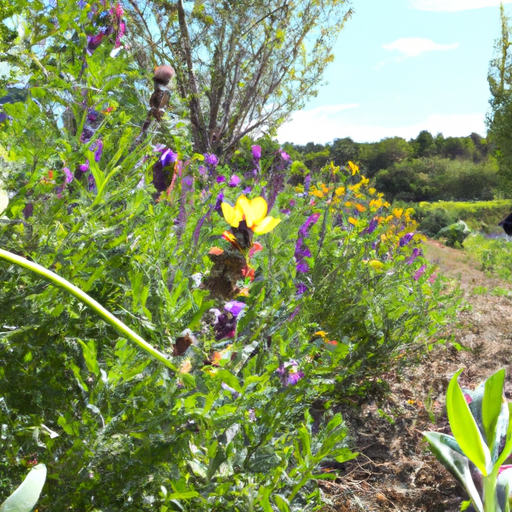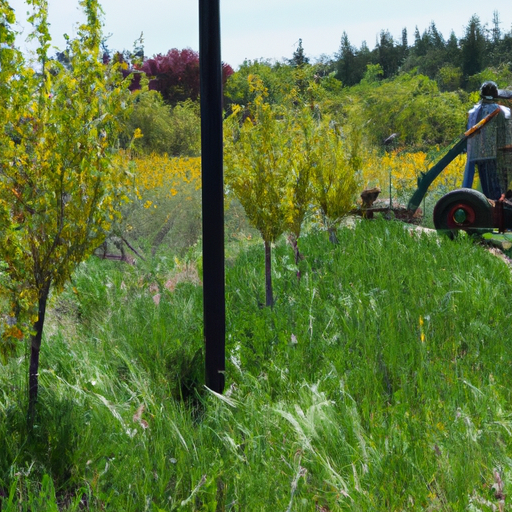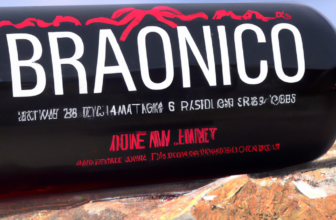
The Importance of Establishing Pollinator Sanctuaries at Jordan Winery
Establishing Pollinator Sanctuaries at Jordan Winery
Pollinators play a crucial role in our ecosystem, and their decline in recent years has raised concerns among scientists and environmentalists. Jordan Winery, a renowned vineyard in Sonoma County, California, recognizes the importance of pollinators and has taken significant steps to establish pollinator sanctuaries on its property. This article will explore the reasons behind the establishment of these sanctuaries and the benefits they bring to both the winery and the environment.
First and foremost, it is essential to understand the significance of pollinators. Bees, butterflies, birds, and other insects are responsible for pollinating a vast majority of flowering plants, including the grapevines that produce the grapes used in winemaking. Without pollinators, the process of fertilization would not occur, leading to a decline in plant populations and a subsequent disruption in the food chain. By establishing pollinator sanctuaries, Jordan Winery aims to provide a safe haven for these essential creatures.
The decline in pollinator populations can be attributed to various factors, including habitat loss, pesticide use, and climate change. Jordan Winery recognizes that it has a responsibility to mitigate these threats and contribute to the conservation of pollinators. By creating sanctuaries, the winery is not only providing a safe habitat for these creatures but also actively participating in their preservation.
The establishment of pollinator sanctuaries at Jordan Winery involves several key elements. First, the winery has set aside specific areas of its property that are rich in native plants and flowers. These plants serve as a source of food and shelter for pollinators, ensuring their survival and promoting their reproduction. Additionally, the winery has implemented sustainable farming practices that minimize the use of pesticides and other harmful chemicals, further protecting the pollinators and their habitats.
The benefits of establishing pollinator sanctuaries extend beyond the preservation of these creatures. Jordan Winery has observed a positive impact on its vineyards since the implementation of these sanctuaries. The presence of pollinators has led to increased grape yields and improved grape quality. This is because the pollinators facilitate the transfer of pollen between flowers, resulting in better fertilization and fruit development. Ultimately, this translates into higher-quality wines for consumers to enjoy.
Furthermore, the establishment of pollinator sanctuaries aligns with Jordan Winery’s commitment to sustainability and environmental stewardship. By actively participating in the conservation of pollinators, the winery sets an example for other vineyards and agricultural operations. It demonstrates that it is possible to balance economic interests with environmental responsibility, proving that businesses can thrive while also protecting the natural world.
In conclusion, the establishment of pollinator sanctuaries at Jordan Winery is a testament to the winery’s dedication to environmental conservation and sustainability. By providing a safe habitat for pollinators and implementing sustainable farming practices, the winery not only contributes to the preservation of these essential creatures but also reaps the benefits in terms of improved grape yields and higher-quality wines. Jordan Winery sets an example for other businesses, showing that it is possible to prioritize the environment without compromising economic success. As we continue to face the challenges of pollinator decline, initiatives like these are crucial in ensuring the survival of these vital creatures and the ecosystems they support.
Step-by-Step Guide to Creating a Pollinator Sanctuary at Jordan Winery

Establishing Pollinator Sanctuaries at Jordan Winery
Pollinators play a crucial role in the ecosystem, facilitating the reproduction of plants and ensuring the production of fruits and seeds. However, in recent years, there has been a decline in pollinator populations due to habitat loss, pesticide use, and climate change. Recognizing the importance of pollinators, Jordan Winery has taken the initiative to create pollinator sanctuaries on its grounds. This step-by-step guide will walk you through the process of establishing a pollinator sanctuary at Jordan Winery.
Step 1: Assessing the Site
Before embarking on the journey of creating a pollinator sanctuary, it is essential to assess the site’s suitability. Look for areas that receive ample sunlight and have well-drained soil. These conditions are favorable for the growth of pollinator-friendly plants. Additionally, consider the proximity to water sources, as pollinators require water for survival.
Step 2: Designing the Sanctuary
Once you have identified a suitable site, it’s time to design the pollinator sanctuary. Start by determining the size of the sanctuary based on the available space and resources. Consider incorporating a variety of plant species to provide a diverse range of food sources for pollinators throughout the year. Aim for a mix of native plants, as they are better adapted to the local climate and provide a more sustainable habitat for pollinators.
Step 3: Selecting Pollinator-Friendly Plants
Choosing the right plants is crucial for attracting and supporting pollinators. Opt for plants that produce nectar and pollen, such as wildflowers, herbs, and shrubs. Native plants like milkweed, coneflower, and goldenrod are particularly beneficial for attracting butterflies, bees, and other pollinators. Avoid using plants treated with pesticides, as they can harm pollinators.
Step 4: Preparing the Soil
Before planting, it is essential to prepare the soil to provide optimal growing conditions for the selected plants. Remove any existing vegetation and weeds from the site. Loosen the soil using a garden fork or tiller to improve drainage and aeration. Incorporate organic matter, such as compost, to enrich the soil and enhance its fertility.
Step 5: Planting and Maintenance
Now that the soil is prepared, it’s time to start planting. Begin by placing taller plants at the back of the sanctuary and shorter ones towards the front. This arrangement ensures that all plants receive adequate sunlight. Water the newly planted vegetation thoroughly and continue to provide regular irrigation until the plants are established.
Maintenance is crucial for the long-term success of the pollinator sanctuary. Regularly monitor the site for weeds and remove them promptly to prevent competition with the desired plants. Mulching can help suppress weed growth and retain moisture in the soil. Additionally, consider providing nesting sites and water sources for pollinators, such as bee houses and shallow dishes filled with water and pebbles.
Step 6: Monitoring and Evaluation
Once the pollinator sanctuary is established, it is essential to monitor its progress and evaluate its effectiveness. Keep track of the types and numbers of pollinators visiting the sanctuary. This information can help identify any gaps in the habitat and guide future improvements. Regularly assess the health and vitality of the plants to ensure they are providing the necessary resources for pollinators.
Creating a pollinator sanctuary at Jordan Winery is a significant step towards conserving and supporting pollinator populations. By following this step-by-step guide, you can establish your own sanctuary and contribute to the preservation of these vital creatures. Remember, every effort counts in protecting our pollinators and ensuring the sustainability of our ecosystems.
Benefits of Pollinator Sanctuaries for Sustainable Agriculture at Jordan Winery
Pollinators play a crucial role in sustainable agriculture, and at Jordan Winery, we recognize the importance of creating pollinator sanctuaries to support these vital creatures. By establishing these sanctuaries, we not only contribute to the preservation of pollinators but also enhance the overall sustainability of our winery operations.
One of the primary benefits of pollinator sanctuaries is the promotion of biodiversity. By providing a diverse range of flowering plants, we attract a wide variety of pollinators, including bees, butterflies, and birds. This diversity is essential for maintaining a healthy ecosystem, as different pollinators have unique preferences and requirements. By catering to their needs, we ensure that our pollinator sanctuaries are thriving and supporting a wide range of species.
In addition to promoting biodiversity, pollinator sanctuaries also contribute to the overall health of our vineyards. Pollinators are responsible for the transfer of pollen from the male to the female parts of flowers, enabling fertilization and subsequent fruit production. Without pollinators, our grapevines would not be able to produce the high-quality grapes that are essential for our winemaking process. By establishing pollinator sanctuaries, we ensure a steady supply of pollinators, which in turn leads to increased fruit set and improved grape quality.
Furthermore, pollinator sanctuaries help to mitigate the negative impacts of pests and diseases. Many pollinators, such as bees, are natural predators of common vineyard pests, including aphids and mites. By attracting these beneficial insects to our pollinator sanctuaries, we create a natural pest control system that reduces the need for chemical interventions. This not only benefits the health of our vineyards but also aligns with our commitment to sustainable farming practices.
Another significant benefit of pollinator sanctuaries is their contribution to soil health. Pollinators, particularly bees, play a crucial role in the pollination of wildflowers and other plants that provide important nutrients to the soil. Through their pollination activities, they facilitate the growth of these plants, which in turn enrich the soil with organic matter. This organic matter improves soil structure, water retention, and nutrient availability, ultimately enhancing the overall health and fertility of our vineyard soils.
Moreover, pollinator sanctuaries serve as educational tools, allowing us to engage with our community and raise awareness about the importance of pollinators in sustainable agriculture. We offer guided tours of our sanctuaries, where visitors can learn about the different pollinator species, their role in the ecosystem, and the steps we take to support their populations. By sharing this knowledge, we hope to inspire others to establish their own pollinator sanctuaries and contribute to the conservation of these vital creatures.
In conclusion, establishing pollinator sanctuaries at Jordan Winery brings numerous benefits to our sustainable agriculture practices. From promoting biodiversity and enhancing grape quality to providing natural pest control and improving soil health, these sanctuaries play a crucial role in the overall sustainability of our operations. Additionally, they serve as educational tools, allowing us to engage with our community and raise awareness about the importance of pollinators. By investing in pollinator sanctuaries, we are not only protecting these vital creatures but also ensuring the long-term success of our winery.






